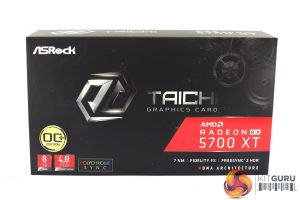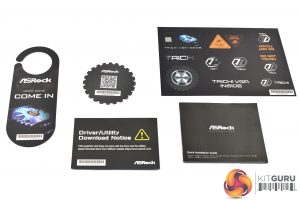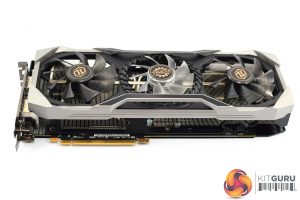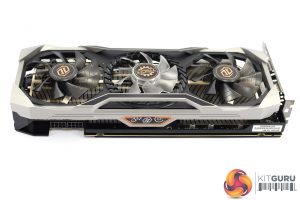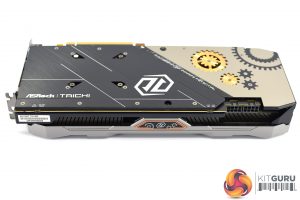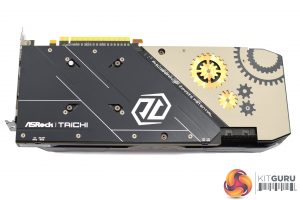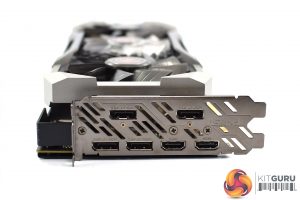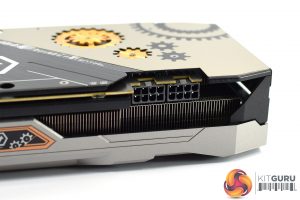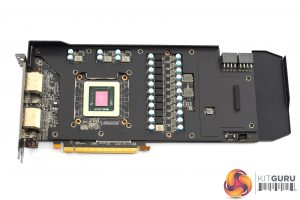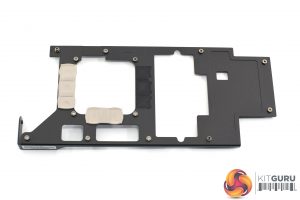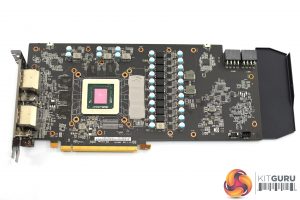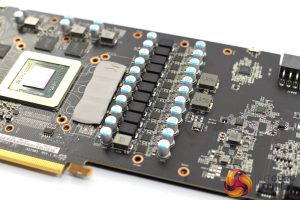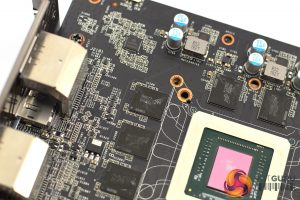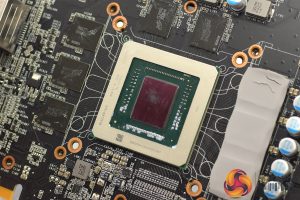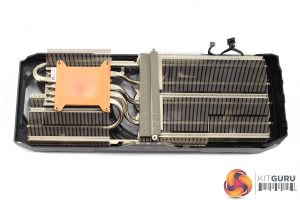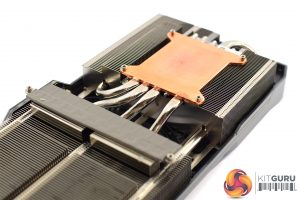The ASRock RX 5700 XT Taichi X OC+ ships in a black box, with the Taichi logo and cog and gear styling visible on the front, but there's no image of the card itself.
Inside, there are a number of accessories, including: a door hanger, quick start guide, a selection of stickers, a reminder to download the latest drivers, plus a coaster with a QR code on it which takes you to asrock.com.
Now, as for the card itself, I have to say this is probably the most unique-looking RX 5700 XT partner card that I have seen so far. The shroud is a mix of black and silver/grey plastic, but it has a prominent, angular design which gives it a fairly aggressive appearance. Some parts of the shroud are also raised above the fans, giving it more of a ‘3D' look.
The three fans also contribute to the overall aesthetic. The two outer fans measure 90mm and have dark, translucent fan blades. The central fan, however, has clear fan blades and measures 80mm across. This is surrounded by an LED strip, with the clear fan blades acting as diffusers for the LEDs. We can also note the gold Taichi stickers on the fans' central hubs.
There's also no getting away from the fact that this is a big card – it measures 324.35 x 145.39 x 53.18mm, making it both the longest and the tallest RX 5700 XT we have reviewed so far. It's also a 2.5-slot thickness, so definitely make sure this will fit in your case.
On the front side of the card, there are three things worth mentioning. The first is the dual-BIOS switch, which sits on the left-hand edge of the card. By default, the switch is positioned to use the ‘OC BIOS', but you can engage the ‘Silent BIOS' if you prefer. Secondly, we can also see the Taichi logo, with more cog and gear styling, positioned in the middle of the card – this is another RGB zone. Lastly, if you don't want any RGB lighting, there is a second switch on the side of the card, which will turn the LEDs on or off – this acts as a master switch.
Additionally, we can also get a look at the Taichi's backplate. This is a full-length metal design, and it is quite visually appealing. It has a two-tone appearance, with about two thirds of backplate being black, brushed metal – with the other third a grey/beige sort of colour. This section also sports two metal cogs, which sit below the backplate itself, which ASRock calls the ‘3D' backplate design.
Display I/O is another interesting area, as there are a total of six video outputs – 4x DisplayPort, and 2x HDMI, so that's two more ports than we usually see.
As for power requirements, the card needs 2x 8-pin PCIe power connectors.
Once we remove the heatsink from the card, we can get a look at the PCB, though most of it is obscured by a large metal frame that acts as a secondary heatsink for the memory chips.
Once that frame is removed, the bare PCB is exposed and we can see ASRock has opted for a 10+1 phase VRM for the GPU, and a 2-phase VRM for the memory. The memory modules themselves are from Micron, each chip is labelled ‘9KA77D9WCW'. Lastly, we can also see the 251mm² Navi 10 GPU sitting in the middle of the PCB.
Looking now at the heatsink, this is comprised of two separate fin stacks, connected by a total of five, 6mm heatpipes. The GPU itself contacts with a copper plate which sits above the heatpipes, while there is a separate plate for the VRM circuitry as well. The memory is cooled by the black plate shown above.
 KitGuru KitGuru.net – Tech News | Hardware News | Hardware Reviews | IOS | Mobile | Gaming | Graphics Cards
KitGuru KitGuru.net – Tech News | Hardware News | Hardware Reviews | IOS | Mobile | Gaming | Graphics Cards


